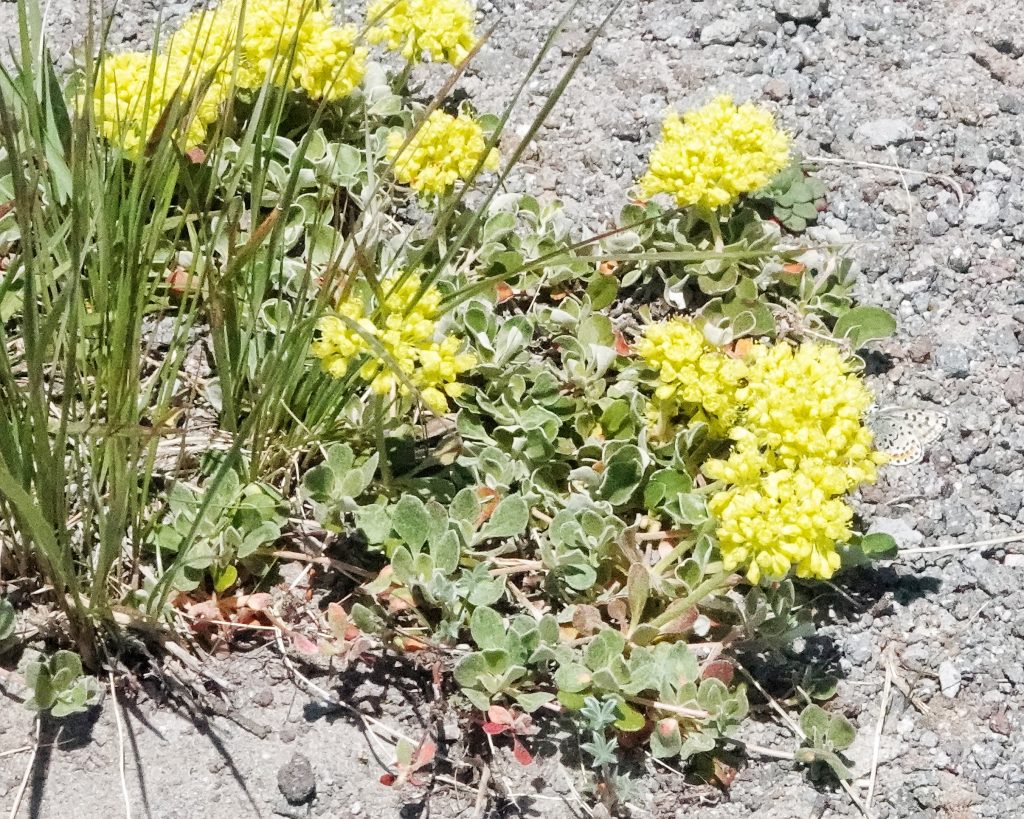
I have been hoping to find Eriogonum umbellatum (sulphur-flower buckwheat) for some time now, but my timing was always wrong and I could never see it in bloom. That is, until I made the first of my trips to Mt. Hood this year, and found hundreds of them in bloom, their multitude of brilliant yellow umbels shining brightly against a sere backdrop of sand and rock. I wanted to find them because of their ecological significance, and was somewhat unprepared for how beautiful they were. But their importance to the biological community was on immediate display with butterflies, moths, bees, wasps, and flies on nearly every plant.
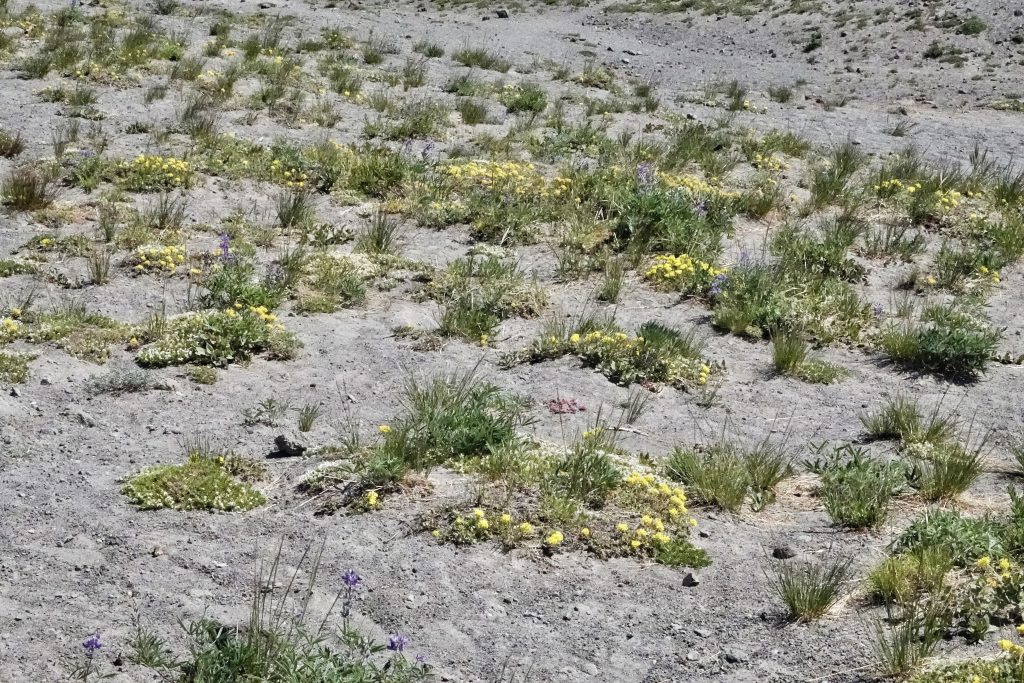
But it isn’t just the insects that they feed directly that makes this such an important plant. Many beneficial insects such as lacewings, ladybeetles, predatory thrips, and chalcidoid wasps in the families Mymaridae, Encyrtidae, and Aphelinidae, all of which help to control the onslaught of herbivorous insects, are also attracted to this plan, as found in a study by David James, et. al (2014) https://www.researchgate.net/profile/David-James-40/publication/263396207_Beneficial_Insects_Attracted_to_Native_Flowering_Buckwheats_Eriogonum_Michx_in_Central_Washington/links/. And the sheer numbers of insects to be found in its vicinity is a boon to the birds and other insectivores in the area. For a great ecological overview of this plant I highly recommend perusing Gucker/Shaw’s (2019) treatment of Eriogonum umbellatum at the BLM website https://www.blm.gov/sites/blm.gov/files/ERUM_A.pdf
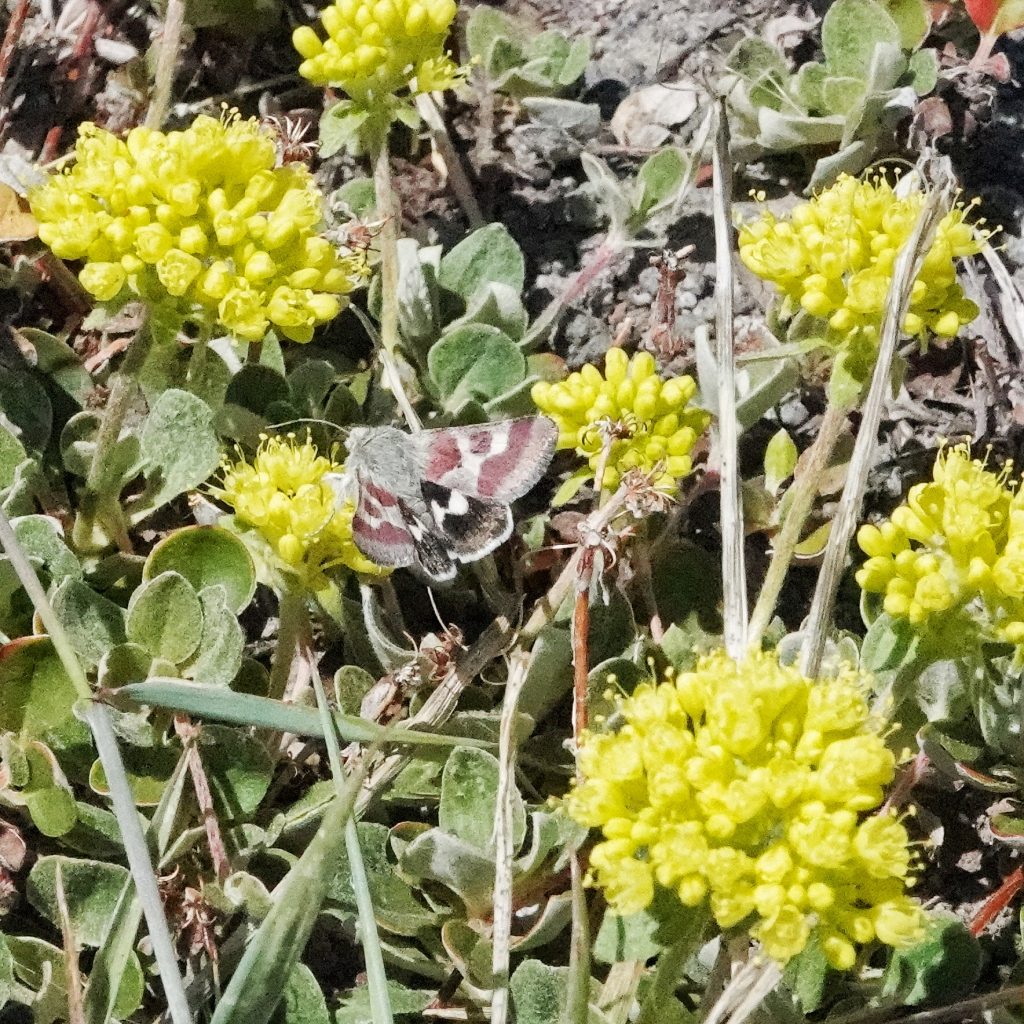
This member of the family Polygonaceae also goes by the name sulphur flower and sulphur buckwheat. There are at least 11 varieties of this species in our region, and many of them intergrade, but based on range the plants shown here seem likely to be E. u. var. haussknechtii,though I did not key them to variety, and this variety is sometimes called Hausknecht’s sulphur flower.
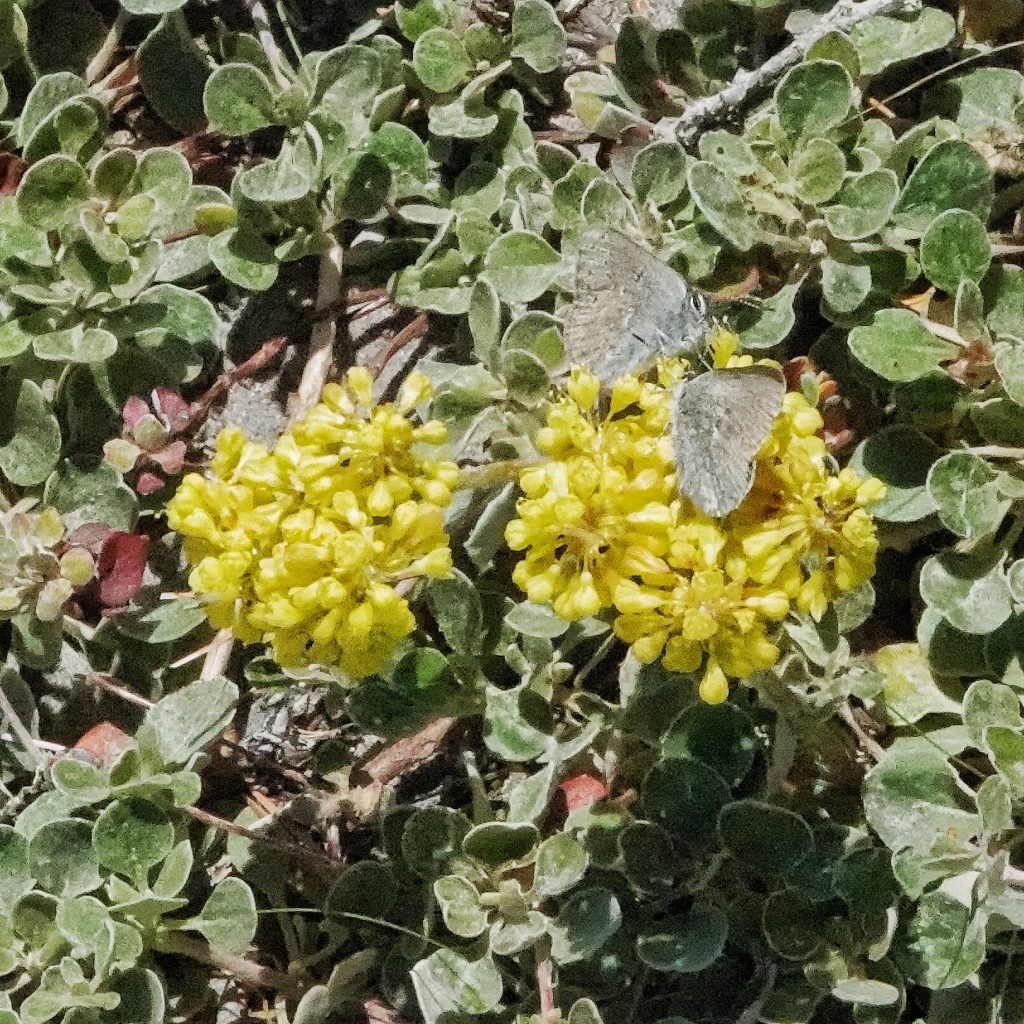
Ethnobotany– “…Stems and flowers powdered, made into a tea and used for menses that ran too long…Poultice of leaves applied to burns…Poultice of leaves, and sometimes roots, applied for lameness or rheumatism…Hot decoction of roots taken for colds…Decoction of root taken for stomachaches…” For more information see the 21 entries at BRIT – Native American Ethnobotany Database
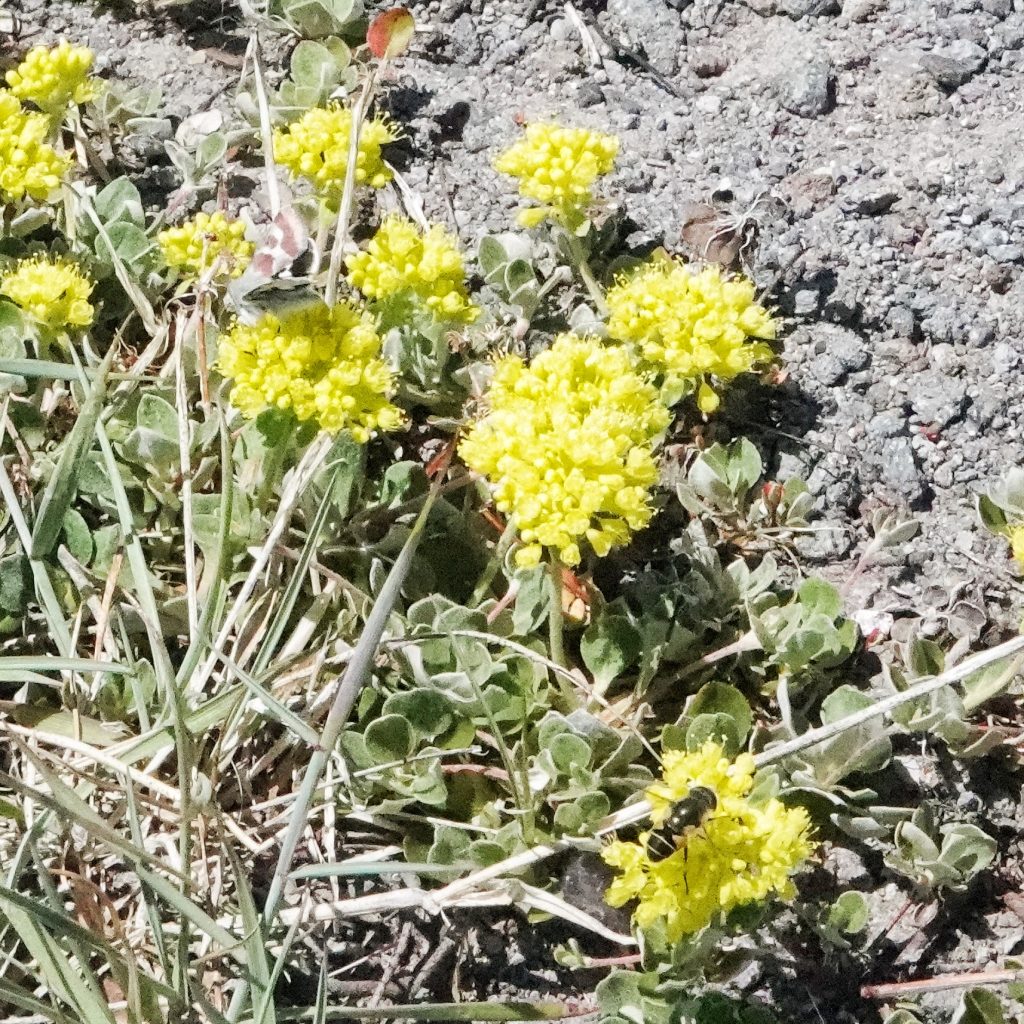
Description– usually in tight mats up to 15” high, with relatively hairless flowers and reflexed involucre lobes; “Mat to small shrub with erect flower stalks. Stems low, woody. Leaves narrow to widely oval, 1/4–1 in. long, with petioles about same length, clustered. Lower blade surface white-fuzzy with matted hairs; upper surface green with hairs. Flower stems sturdy, leafless. Flower cluster with several noticeable leaf-like bracts in single whorl at base, bract tips usually reflexed downward. Flowers bractless within clusters, bright yellow or cream, fading to red or orange.” Eriogonum umbellatum</em> var. <em>polyanthum | Sulphur Flower | Wildflowers of the Pacific Northwest
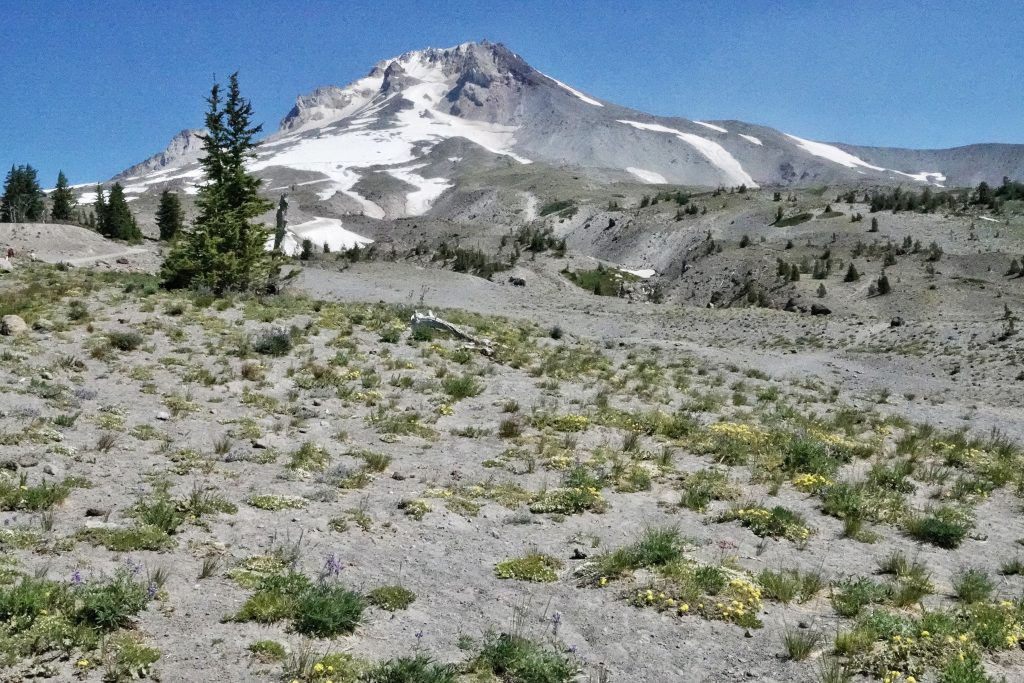
Similar species– For the most part positive identification of any Eriogonum will require close observation, and probably a hand lens and a key; Eriogonum marifolium can be very similar, but the lobes of the involucre are erect rather than reflexed; E. sphaerocephalum has hairy outside of flowers, at least at the base; E. caespitosum has tiny leaves that are very wooly; E. heracleoides has a whorl of leaves at mid stem, and cream colored flowers; E. compositum has leaves that are heart shaped to triangular, and off-white flowers.
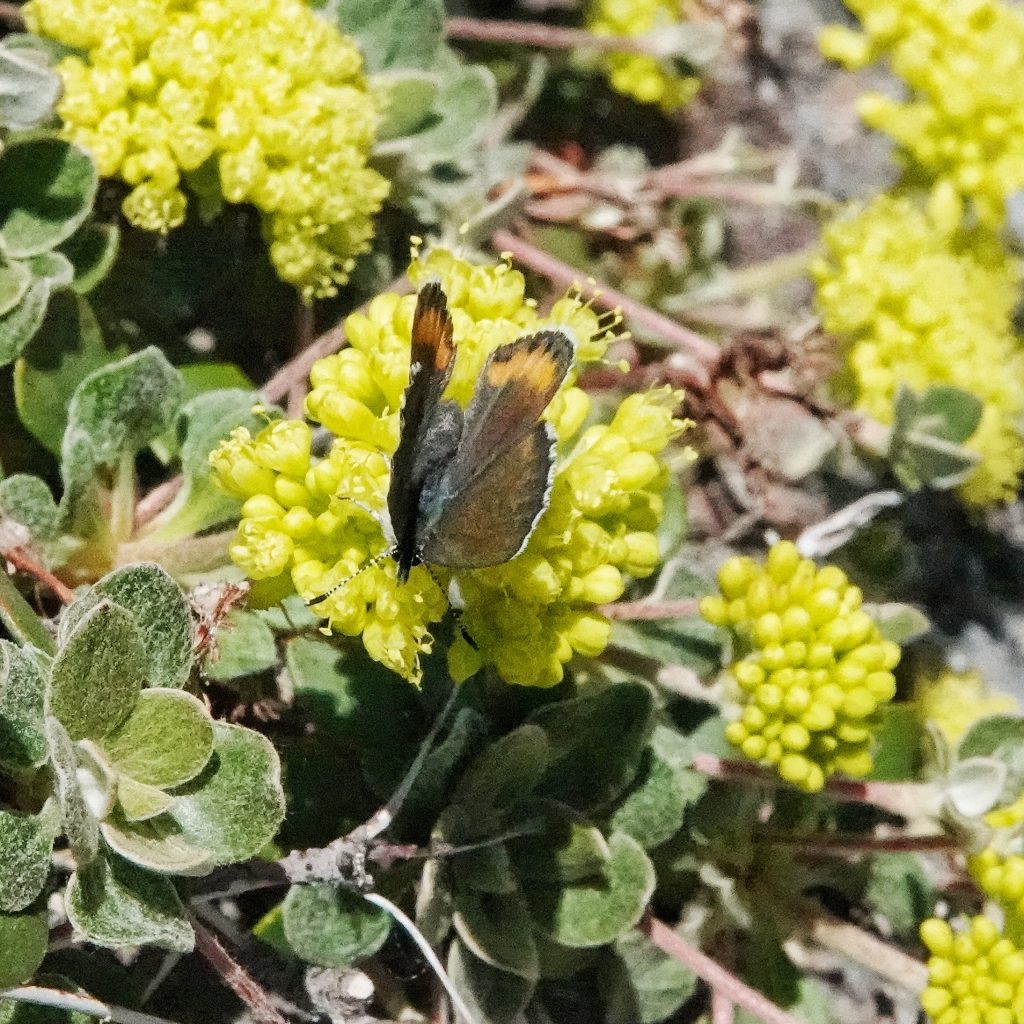
Habitat– “Sulphur-flower buckwheat habitats include grasslands (Fig. 1), shrublands, woodlands (Fig. 2), and forests (Fig. 3) from near sea level to above treeline (Rose et al. 1998). It occurs frequently on dry, sandy to rocky sites with low to moderate annual precipitation (≥ 10 in [250 mm]). Plants are often widely scattered, but can be very abundant in some stands…”https://www.blm.gov/sites/blm.gov/files/ERUM_A.pdf
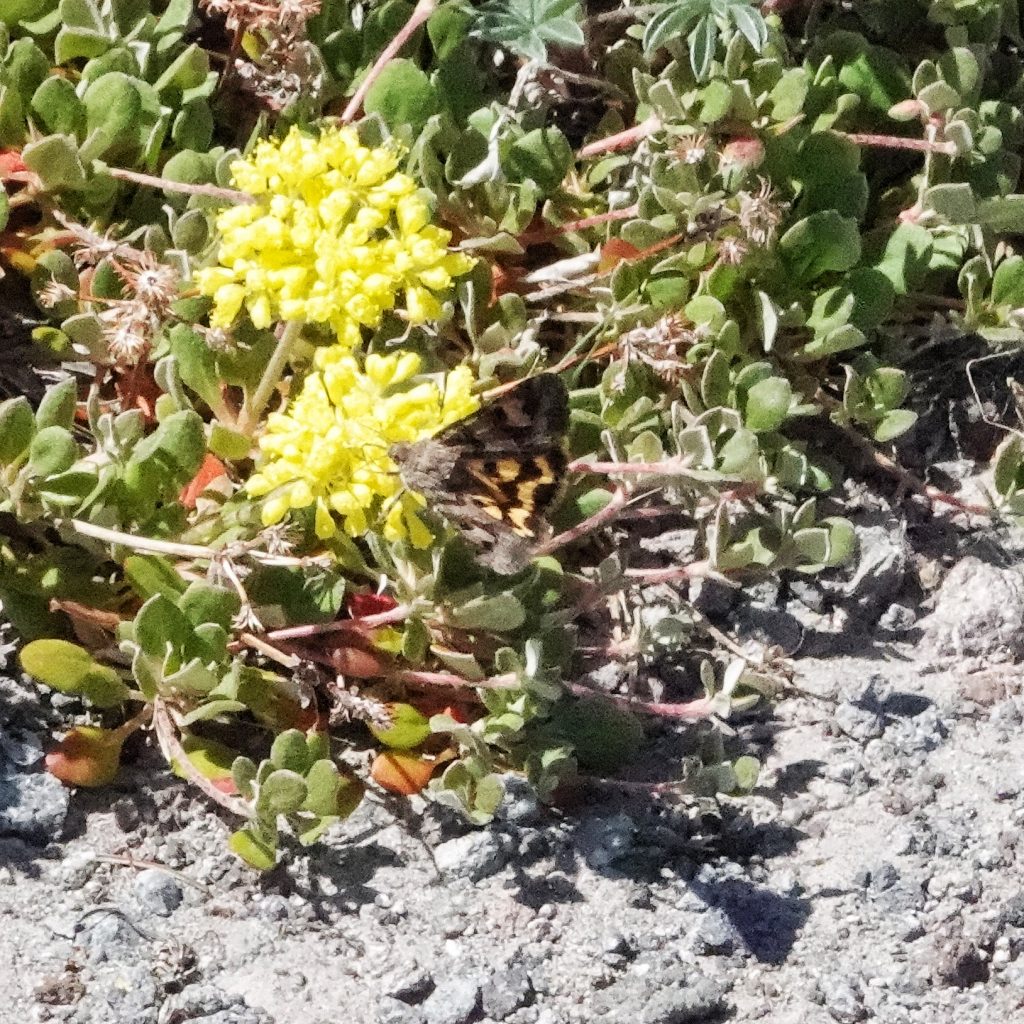
Range– “Sulphur-flower buckwheat is a widely distributed western species occurring from British Columbia and Alberta south through south-central Colorado, the northern half of Arizona, and California.” https://www.blm.gov/sites/blm.gov/files/ERUM_A.pdf; in the PNW it can be found region wide in appropriate habitat.
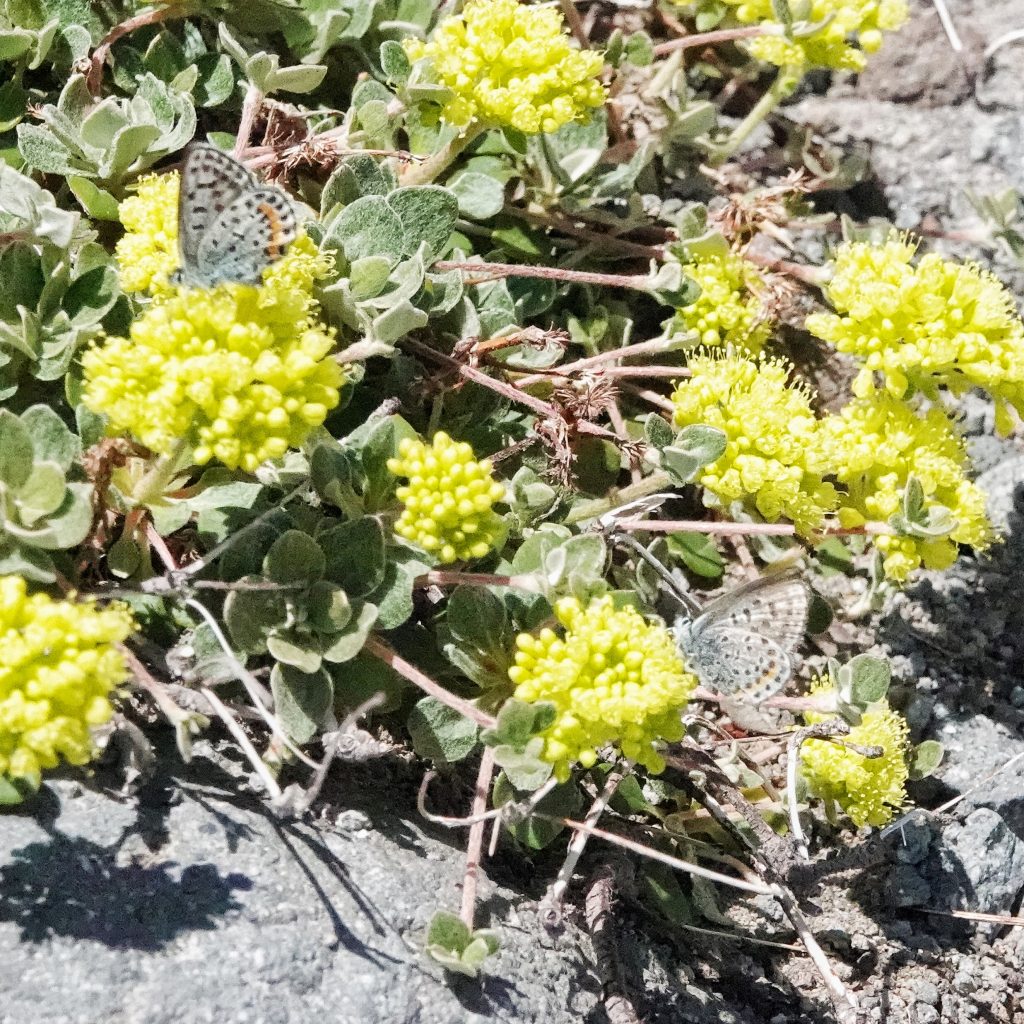
Eaten by– “Pollinators representing the Andrenidae, Apidae, Bombyliidae, Halictidae, Hesperiidae, Lycaenidae, Muscidae, Nymphalidae, Pieridae, Sphecidae, Syrphidae, and Tachinidae families were observed utilizing sulphur-flower buckwheat in at least 1 of 3 years of observations made in meadows at the Rocky Mountain Biological Laboratory, Colorado (Burkle and Irwin 2009)” https://www.blm.gov/sites/blm.gov/files/ERUM_A.pdf
“Nectar: Anise Swallowtail, Rocky Mountain Parnassian, Checkered White, Orange Sulphur, Red Admiral, Painted Lady, American Lady, West Coast Lady, Callippe Fritillary, Coronis Fritillary, Zerene Fritillary, Common Buckeye, California Tortoiseshell, Hoary Copper, Chryxus Arctic, Ridings’s Satyr, Small Wood-Nymph (fq), Common Ringlet. Western Pine Elfin (iNaturalist photograph). Bramble Green Hairstreak, Gray Hairstreak, Behr’s Hairstreak (fq), Coral Hairstreak, Hedgerow Hairstreak (fq), ‘Siva’ Juniper Hairstreak (fq), Sagebrush Sooty Hairstreak, Western Sooty Hairstreak (fq), Sheridan’s Hairstreak, Thicket Hairstreak (Diane Wilson), Blue Copper (fq), Great Copper, Lilac-bordered Copper, Ruddy Copper. Arrowhead Blue, and Boisduval’s Blue (fq), Leona’s Little Blue (fq), Lupine Blue, and Marine Blue, Melissa Blue, Reakirt’s Blue, Shasta Blue, Silvery Blue, Square-spotted Blue (fq). Northern Cloudywing, Persius Duskywing, Common Checkered-Skipper, Common Branded Skipper, Dun Skipper, Juba Skipper, Pahaska Skipper. In a Wyoming study, Sulphur Flower was the primary nectar source for the Clodius Parnassian (Auckland, et.al.). Scott rates it “very popular” as a butterfly nectar source. Larval host for Mormon Metalmark, Bramble Green Hairstreak, Desert Green Hairstreak, Sheridan’s Green Hairstreak, Blue Copper, Square-spotted Blue, Glaucon Blue (a relatively newly described species of the Square-spotted Blue complex, associated with Sulphur Flower), Comstock’s Blue, Intermediate Blue, Lupine Blue (fq), Melissa Blue, Acmon Blue.” https://www.cnps-scv.org/images/handouts/CaliforniaPlantsforLepidoptera2014.pdf; I would be very surprised if there are not moths whose larvae utilize this plant, since there are well over a dozen that use other Eriogonum spp., but I can’t find any, and the same is true for beetles and true bugs; provides forage for a variety of ungulates and small mammals, and its seeds and insect visitors are important food sources to small mammals, game birds, and song birds.
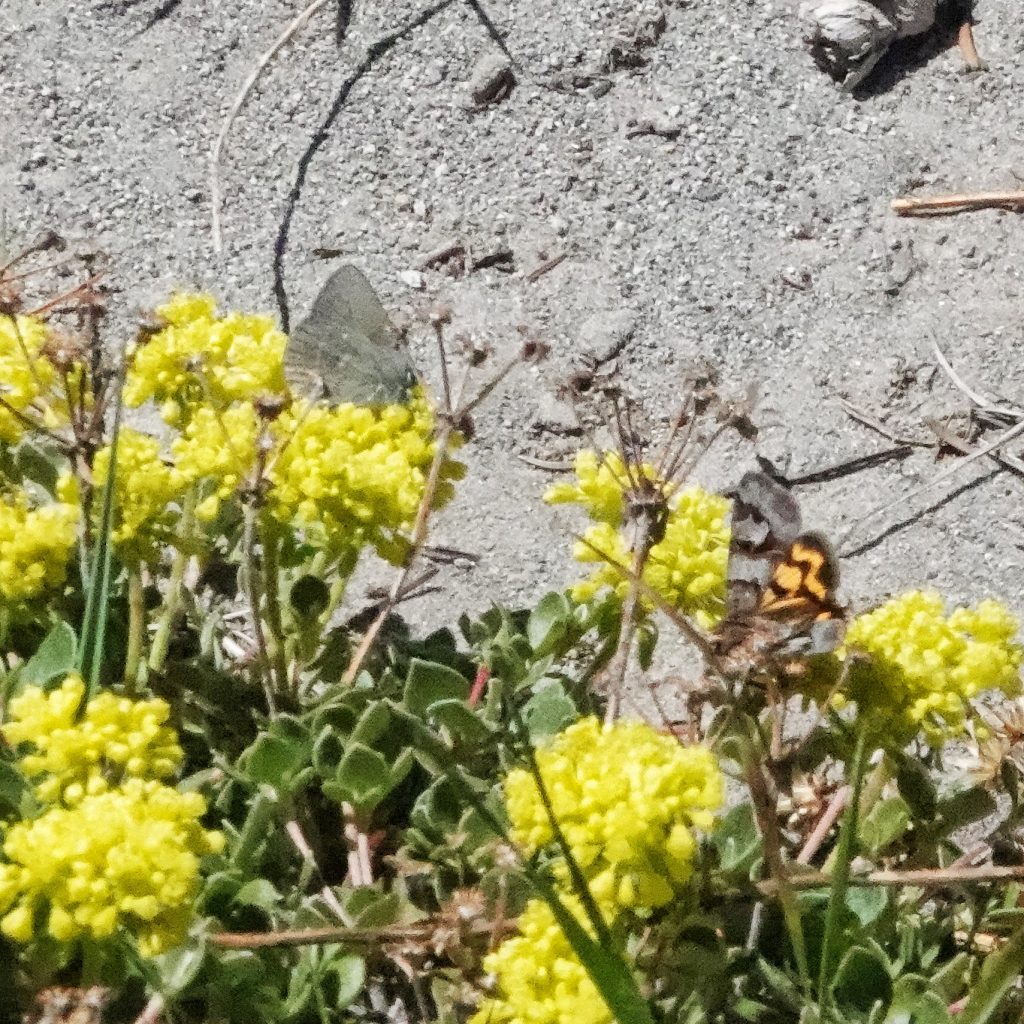
Reproductive timing– Flowers bloom from June into September, depending on elevation and latitude.
Etymology of names– Eriogonum is from the Greek words for ‘wool’ and ‘knee’, and refers to the wooly joints and nodes. The specific epithet umbellatum is from the Latin word for ‘sunshade/umbrella’, and refers to the umbels that form the inflorescence of this species.
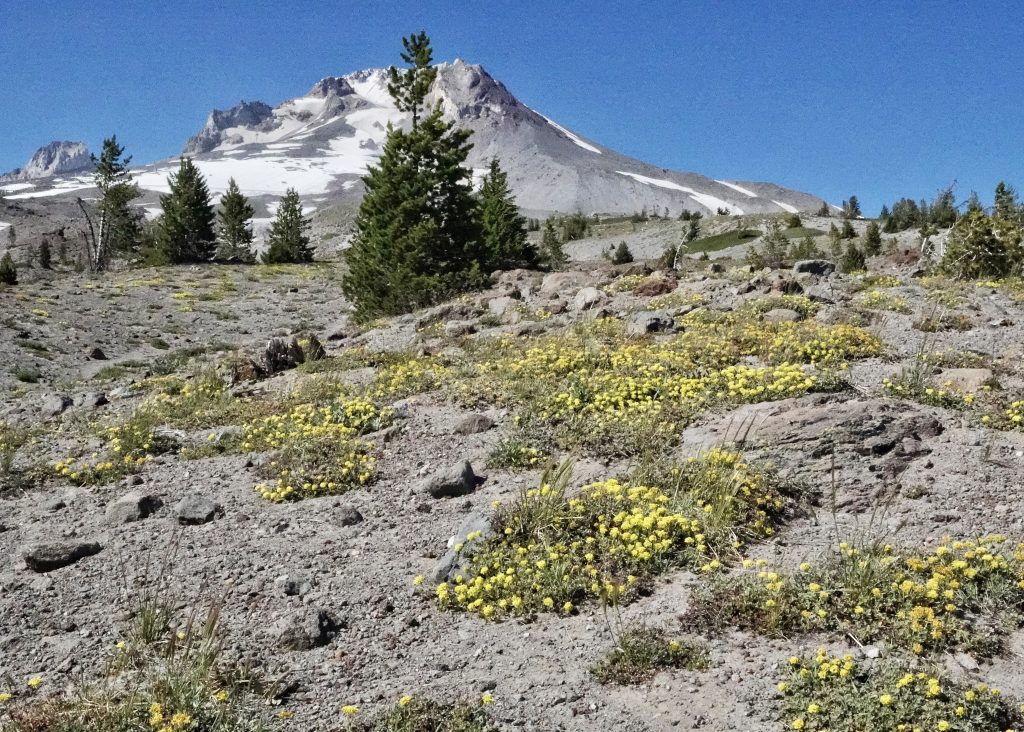
https://www.blm.gov/sites/blm.gov/files/ERUM_A.pdf
https://www.nrcs.usda.gov/plantmaterials/capmcpg11382.pdf
Eriogonum umbellatum – Burke Herbarium Image Collection
BRIT – Native American Ethnobotany Database
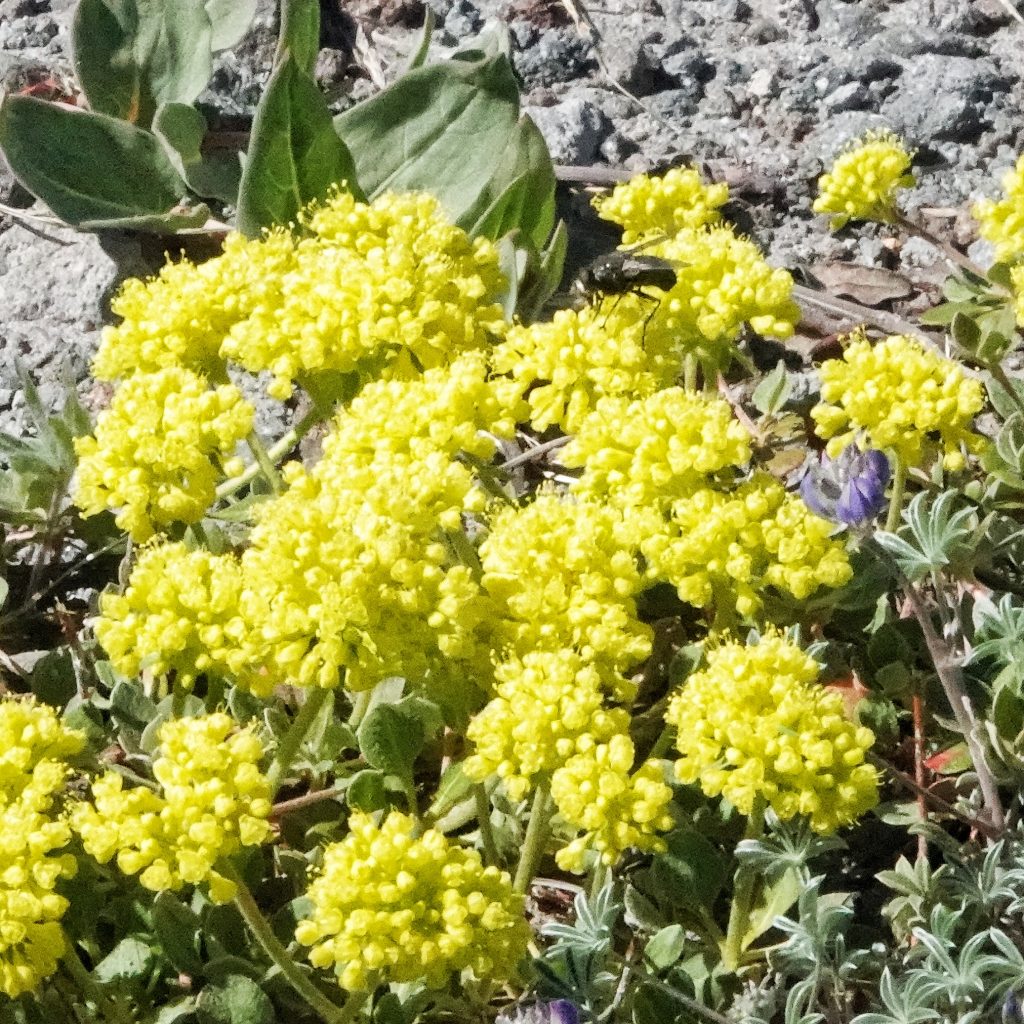
2 thoughts on “Eriogonum umbellatum (Sulphur-flower Buckwheat)”